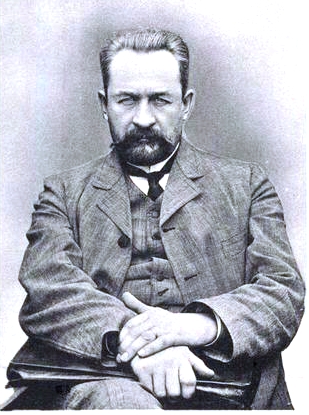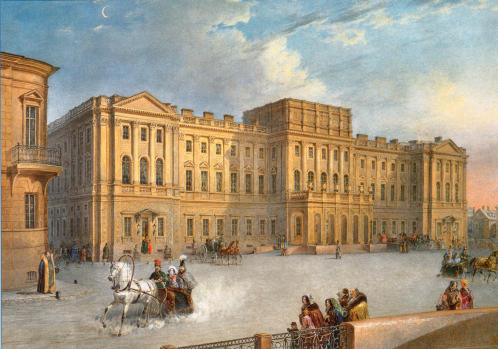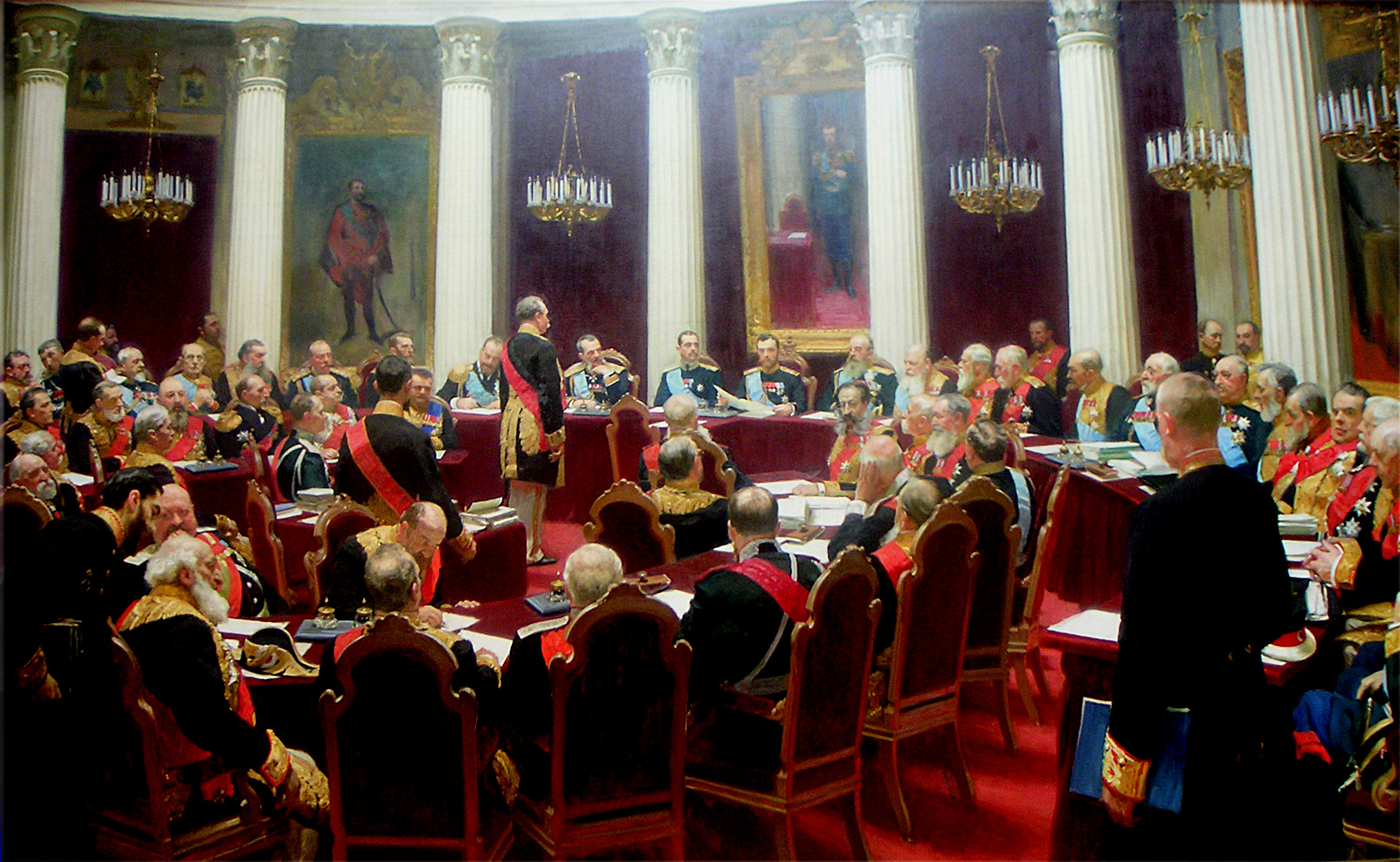|
Vyborg Manifesto
The Vyborg Manifesto (russian: Выборгское воззвание, translit=Vyborgskoye Vozzvaniye, fi, Viipurin manifesti, sv, Viborgsmanifestet); also called the Vyborg Appeal) was a proclamation signed by several Russian politicians, primarily Kadets and Trudoviks) of the dissolved First Duma on . In the wake of the 1905 Revolution, Russia's first modern parliament, the State Duma, was convoked. It rapidly became a voice of radicalism and liberalism, and was subsequently dissolved by the Tsarist government 72 days after convocation. Outraged, several of the members of the first Duma travelled to Vyborg in the autonomous Grand Duchy of Finland, where they signed a 'manifesto' calling for 'passive resistance' which included evading taxes and defying conscription orders. The manifesto was met with 'universal indifference', which allowed the Tsarist authorities to silence the manifesto's contributors, and they were all banned from participating in future Dumas. The resul ... [...More Info...] [...Related Items...] OR: [Wikipedia] [Google] [Baidu] |
Kresty Prison
Kresty (russian: Кресты, literally ''Crosses'') prison, officially Investigative Isolator No. 1 of the Administration of the Federal Service for the Execution of Punishments for the city of Saint Petersburg (Следственный изолятор № 1 УФСИН по г. Санкт-Петербургу), was a detention center in Saint Petersburg, Russia. The prison consists of two cross-shaped buildings (hence the name) and the Orthodox ''Church of St. Alexander Nevsky''. The prison has 960 cells and was originally designed for 1,150 detainees.Kresty article in ''Encyclopedia of Saint Peterburg'' Kresty was closed and in 2017 the inmates were relocated to a modern prison facility named Kresty-2. Wine warehouse The history of the prison starts in the 1730s. During the reign of |
Finland
Finland ( fi, Suomi ; sv, Finland ), officially the Republic of Finland (; ), is a Nordic country in Northern Europe. It shares land borders with Sweden to the northwest, Norway to the north, and Russia to the east, with the Gulf of Bothnia to the west and the Gulf of Finland across Estonia to the south. Finland covers an area of with a population of 5.6 million. Helsinki is the capital and largest city, forming a larger metropolitan area with the neighbouring cities of Espoo, Kauniainen, and Vantaa. The vast majority of the population are ethnic Finns. Finnish, alongside Swedish, are the official languages. Swedish is the native language of 5.2% of the population. Finland's climate varies from humid continental in the south to the boreal in the north. The land cover is primarily a boreal forest biome, with more than 180,000 recorded lakes. Finland was first inhabited around 9000 BC after the Last Glacial Period. The Stone Age introduced several differ ... [...More Info...] [...Related Items...] OR: [Wikipedia] [Google] [Baidu] |
Finnish Language
Finnish ( endonym: or ) is a Uralic language of the Finnic branch, spoken by the majority of the population in Finland and by ethnic Finns outside of Finland. Finnish is one of the two official languages of Finland (the other being Swedish). In Sweden, both Finnish and Meänkieli (which has significant mutual intelligibility with Finnish) are official minority languages. The Kven language, which like Meänkieli is mutually intelligible with Finnish, is spoken in the Norwegian county Troms og Finnmark by a minority group of Finnish descent. Finnish is typologically agglutinative and uses almost exclusively suffixal affixation. Nouns, adjectives, pronouns, numerals and verbs are inflected depending on their role in the sentence. Sentences are normally formed with subject–verb–object word order, although the extensive use of inflection allows them to be ordered differently. Word order variations are often reserved for differences in information structure. Fi ... [...More Info...] [...Related Items...] OR: [Wikipedia] [Google] [Baidu] |
Vyborg
Vyborg (; rus, Вы́борг, links=1, r=Výborg, p=ˈvɨbərk; fi, Viipuri ; sv, Viborg ; german: Wiborg ) is a town in, and the administrative center of, Vyborgsky District in Leningrad Oblast, Russia. It lies on the Karelian Isthmus near the head of the Vyborg Bay, to the northwest of St. Petersburg, east of the Finnish capital Helsinki, and south of Russia's border with Finland, where the Saimaa Canal enters the Gulf of Finland. The population of Vyborg is as follows: Located in the boundary zone between the East Slavic/Russian and Finnish worlds, formerly well known as one of the few medieval towns in Finland, Vyborg has changed hands several times in history, most recently in 1944 when the Soviet Union captured it from Finland during World War II. Finland evacuated the entire population of the city and resettled them within the rest of the country. On March 25, 2010, Dmitry Medvedev named Vyborg the " City of Military Glory". In Russia, a city can be ... [...More Info...] [...Related Items...] OR: [Wikipedia] [Google] [Baidu] |
Former Deputies Of Russian State Duma Arrive In Vyborg
A former is an object, such as a template, gauge or cutting die, which is used to form something such as a boat's hull. Typically, a former gives shape to a structure that may have complex curvature. A former may become an integral part of the finished structure, as in an aircraft fuselage, or it may be removable, being using in the construction process and then discarded or re-used. Aircraft formers Formers are used in the construction of aircraft fuselage, of which a typical fuselage has a series from the nose to the empennage, typically perpendicular to the longitudinal axis of the aircraft. The primary purpose of formers is to establish the shape of the fuselage and reduce the column length of stringers to prevent instability. Formers are typically attached to longerons, which support the skin of the aircraft. The "former-and-longeron" technique (also called stations and stringers) was adopted from boat construction, and was typical of light aircraft built until the ... [...More Info...] [...Related Items...] OR: [Wikipedia] [Google] [Baidu] |
Prince Georgy Lvov
Prince Georgy Yevgenyevich Lvov (7/8 March 1925) was a Russian aristocrat and statesman who served as the first prime minister of republican Russia from 15 March to 20 July 1917. During this time he served as Russia's ''de facto'' head of state. A member of the Lvov princely family, Lvov gained national fame for organising relief work in the Russian Far East during the Russo-Japanese War. In 1905, he joined the Constitutional Democratic Party. Early life and education Georgy Lvov was born on 2 November 1861 (21 October, Old Style, Julian Calendar) in Dresden, Saxony, then part of the German Confederation. The Lvov princely family were among the oldest Russian noble families, tracing their roots from the sovereign Rurik dynasty princes of Yaroslavl. His father was a reform-minded liberal who spent almost all his income on his children's education; Lvov and his five brothers were sent off to the most prestigious Moscow schools. Throughout his youth, Georgy lived with his fami ... [...More Info...] [...Related Items...] OR: [Wikipedia] [Google] [Baidu] |
Ivan Goremykin
Ivan Logginovich Goremykin (russian: Ива́н Лóггинович Горемы́кин, Iván Lógginovich Goremýkin) (8 November 183924 December 1917) was a Russian politician who served as the prime minister of the Russian Empire in 1906 and again from 1914 to 1916, during World War I. He was the last person to have the civil rank of Active Privy Councillor, 1st class. During his time in government, Goremykin pursued conservative policies. Biography Goremykin was born on 8 November 1839 into a noble family. In 1860 he completed studies at the Imperial School of Jurisprudence and became a lawyer in Saint Petersburg. In the Senate, Goremykin became responsible for agriculture in Congress Poland. In 1866 he was appointed as vice governor in Płock and in 1869 in Kielce. In 1891 he was appointed as deputy minister of justice, considered being an expert on the "peasant question". Within a year he moved to the Ministry of the Interior, becoming Minister from 1895-1899. A self-d ... [...More Info...] [...Related Items...] OR: [Wikipedia] [Google] [Baidu] |
Old Style Dates
Old Style (O.S.) and New Style (N.S.) indicate dating systems before and after a calendar change, respectively. Usually, this is the change from the Julian calendar to the Gregorian calendar as enacted in various European countries between 1582 and 1923. In England, Wales, Ireland and Britain's American colonies, there were two calendar changes, both in 1752. The first adjusted the start of a new year from Lady Day (25 March) to 1 January (which Scotland had done from 1600), while the second discarded the Julian calendar in favour of the Gregorian calendar, removing 11 days from the September 1752 calendar to do so.Spathaky, MikOld Style and New Style Dates and the change to the Gregorian Calendar "Before 1752, parish registers, in addition to a new year heading after 24th March showing, for example '1733', had another heading at the end of the following December indicating '1733/4'. This showed where the Historical Year 1734 started even though the Civil Year 1733 continued u ... [...More Info...] [...Related Items...] OR: [Wikipedia] [Google] [Baidu] |
University Of Dorpat
The University of Tartu (UT; et, Tartu Ülikool; la, Universitas Tartuensis) is a university in the city of Tartu in Estonia. It is the national university of Estonia. It is the only classical university in the country, and also its biggest and most prestigious university. It was founded under the name of ''Academia Gustaviana'' in 1632 by Baron Johan Skytte, the Governor-General (1629–1634) of Swedish Livonia, Ingria, and Karelia, with the required ratification provided by his long-time friend and former student – from age 7 –, King Gustavus Adolphus, shortly before the king's death on 6 November in the Battle of Lützen (1632), during the Thirty Years' War (1618–1648). Nearly 14,000 students are at the university, of whom over 1,300 are foreign students. The language of instruction in most curricula is Estonian, some more notable exceptions are taught in English, such as semiotics, applied measurement science, computer science, information technology law, and Europ ... [...More Info...] [...Related Items...] OR: [Wikipedia] [Google] [Baidu] |
State Council Of Imperial Russia
The State Council ( rus, Госуда́рственный сове́т, p=ɡəsʊˈdarstvʲɪn(ː)ɨj sɐˈvʲet) was the supreme state advisory body to the Tsar in Imperial Russia. From 1906, it was the upper house of the parliament under the Russian Constitution of 1906. 18th century Early Tsars' Councils were small and dealt primarily with external politics. Peter I of Russia introduced the Secret Council. Catherine I of Russia introduced the Supreme Secret Council. Its role varied during different reigns. Peter III of Russia created the Imperial Council on 20 May 1762 ("Императорский Совет"), or, formally "The Council at the Highest Court" ("Совет при высочайшем дворе"). It was dismissed shortly after the succession of Catherine II of Russia. 1810–1906 The State Council was established by Alexander I of Russia in 1810 as part of Speransky's reforms. Although envisaged by Speransky as the upper chamber of the Russian parliament ... [...More Info...] [...Related Items...] OR: [Wikipedia] [Google] [Baidu] |
Fundamental Laws (Russian Empire)
The Russian Constitution of 1906 refers to a major revision of the 1832 Fundamental Laws of the Russian Empire, which transformed the formerly absolutist state into one in which the emperor agreed for the first time to share his autocratic power with a parliament. It was enacted on 1906, on the eve of the opening of the first State Duma. This first-ever Russian Constitution was a revision of the earlier Fundamental Laws, which had been published as the Code of Laws of the Russian Empire (russian: Свод законов Российской империи, pre-1917 Russian orthography: ''Сводъ законовъ Россійской имперіи'') in 1832. It was granted during the Russian Revolution of 1905, in a last-ditch effort by the imperial government to preserve its own existence and keep the empire from disintegration. The new constitution provided for a bicameral Russian parliament, without whose approval no laws were to be enacted in Russia. This legislatur ... [...More Info...] [...Related Items...] OR: [Wikipedia] [Google] [Baidu] |









